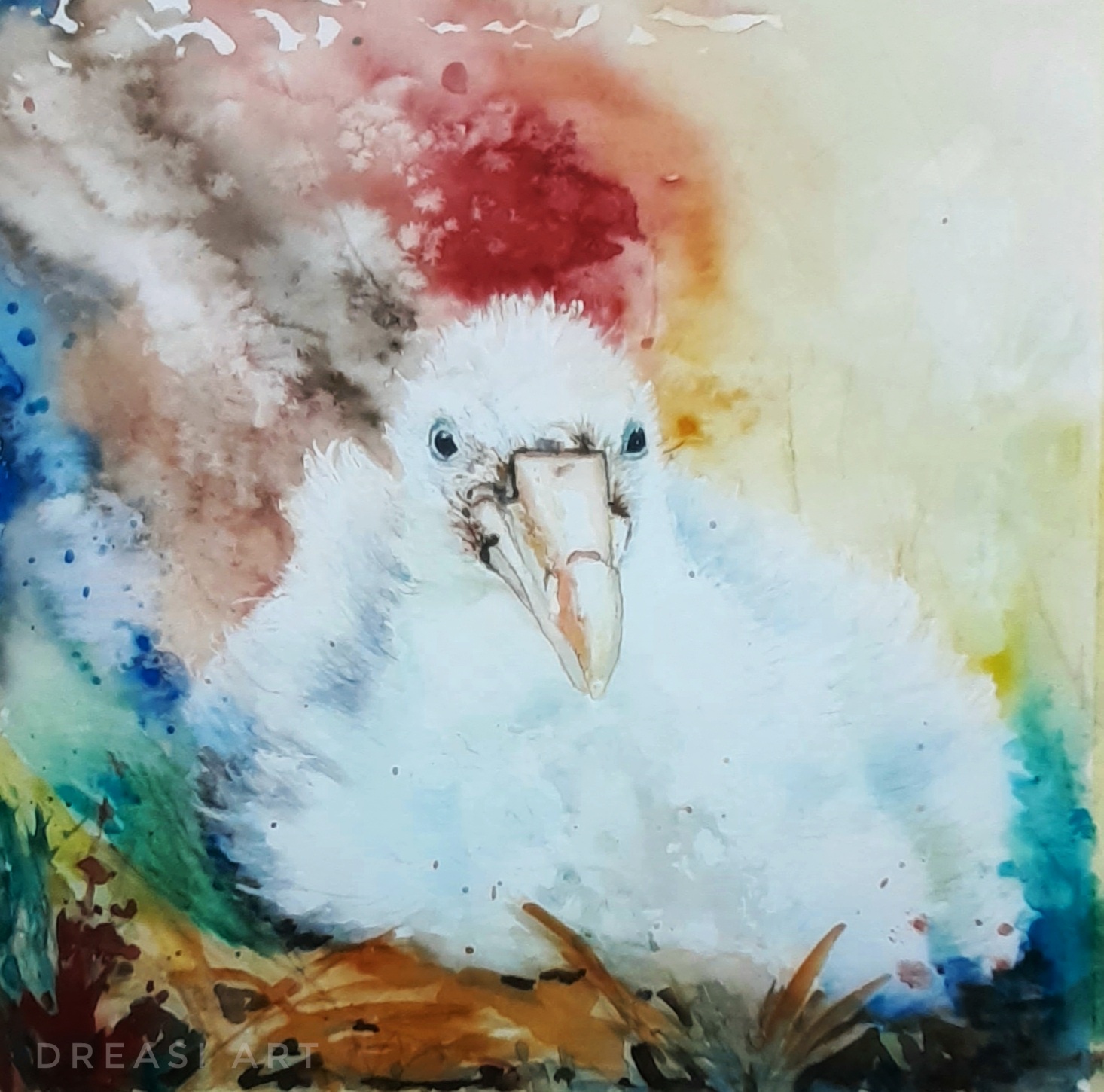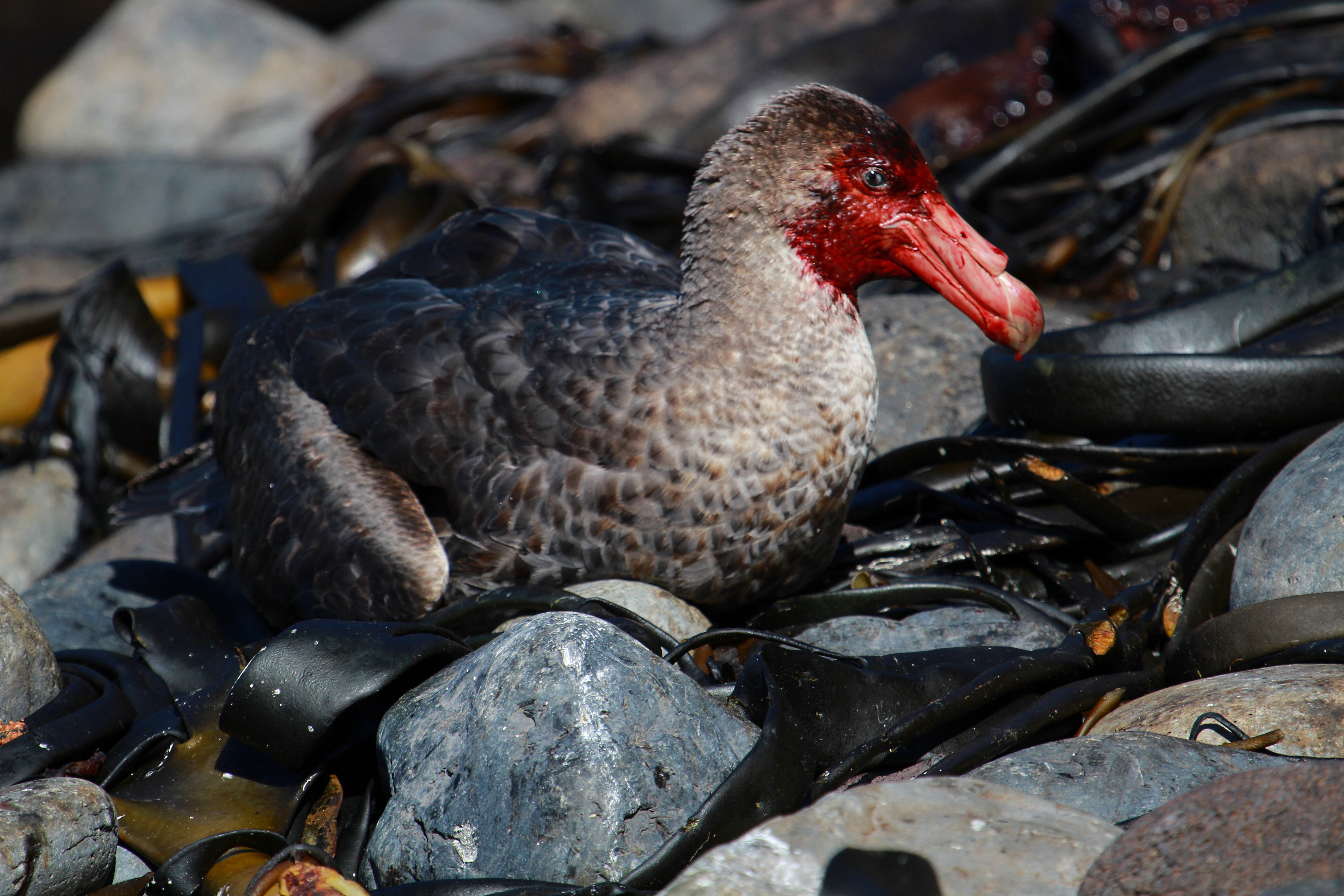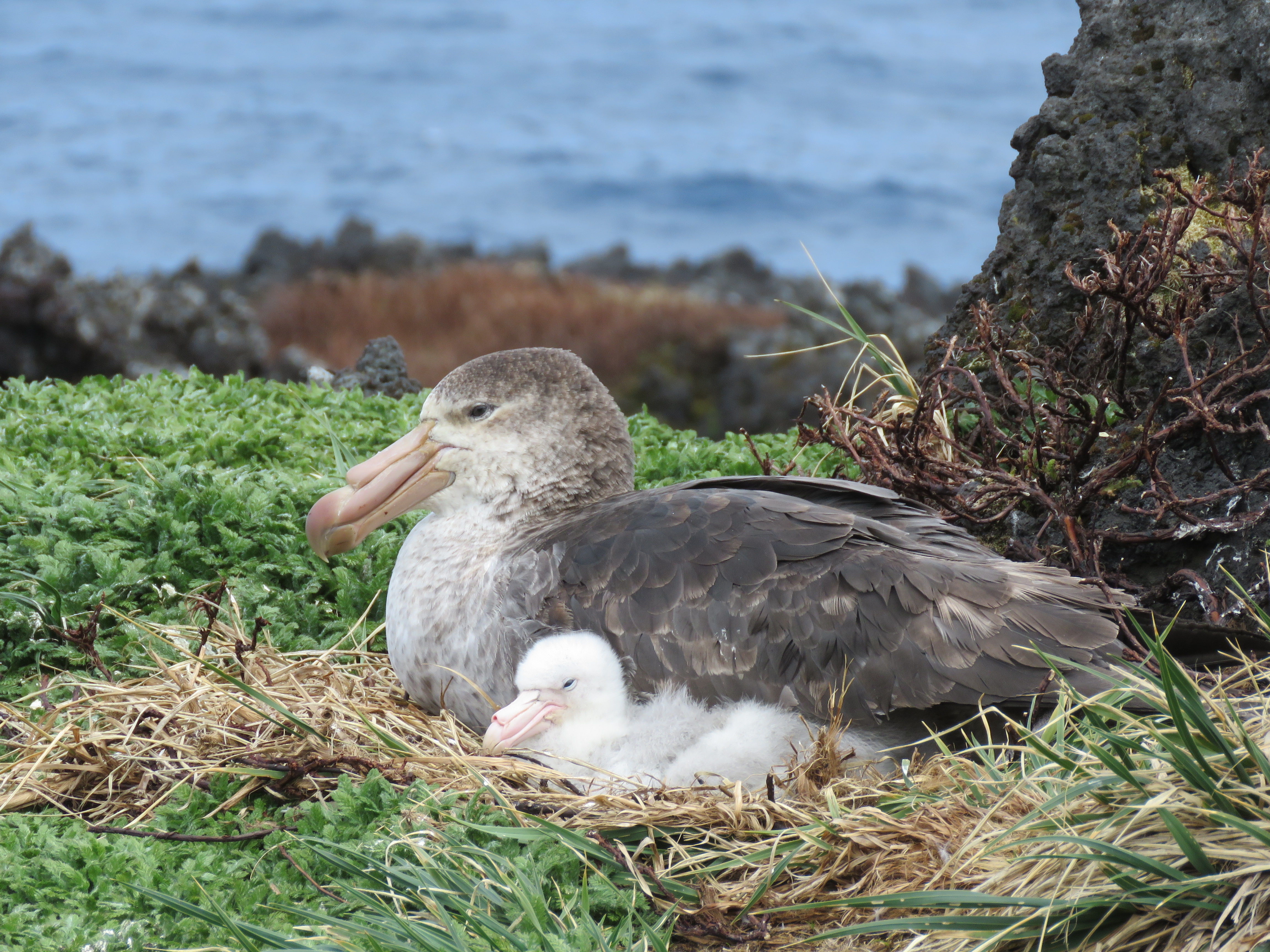
Northern Giant Petrel chick by ABUN artist Andrea Siemt Schmincke for ACAP, in watercolours; after a photograph by Liezl Pretorius
Note: The illustrated Species Summaries have been written to help inform the general public, including school learners, of the biology and conservation needs of the 31 ACAP-listed species. They serve to complement the more detailed and referenced ACAP Species Assessments. To date, summaries for the 22 species of albatrosses have been produced in in all three ACAP official languages, English, French and Spanish.
Texts have also been prepared for the nine ACAP-listed petrels and shearwaters in English, but as yet have not been translated into French and Spanish. As an interim service, the illustrated English texts are being posted to ACAP Latest News, continuing here with the Northern Giant Petrel Macronectes halli. The Photo Essay series of the 31 listed species takes a more personal approach; click here for the Northern Giant Petrel by Janine Schoombie.

After scavenging from a seal carcass, bloodied Northern Giant Petrels s are fastidious about bathing at sea
Protected from the prevailing weather by a rock face, a Northern Giant Petrel broods its downy chick on Marion Island
Photographs by Janine Schoombie
The Northern Giant Petrel is one of the two largest petrels in the family Procellariidae. They are so large they do not need to breed in burrows to be protected from predators. The species was only recognized as separate to the closely related and similar looking Southern Giant Petrel in the 1960s.
Unlike its sister species, which has a white phase, the Northern Giant Petrel exists in only one colour phase. Juveniles are uniform dark brown, adults are paler, especially on the face. The horn-coloured bill has a diagnostic reddish tip, separating it from the southern species which has a green tip. Males are noticeably larger than females.
The species has a more restricted breeding range than the near-Southern Ocean distribution of the Southern Giant Petrel. It breeds on sub-Antarctic islands in the Atlantic and Indian Oceans, including on islands south of New Zealand (where the Southern does not). Unlike the Southern species it does not breed within Antarctica. The bird breeds singly or in loose colonies, laying its single egg in nests on the ground, often made against the sides of protruding rocks. Breeding commences about six weeks earlier than Southern Giant Petrels, although hybridisation has been reported at several breeding localities where both species coexist. The global population is estimated at 11 800 breeding pairs; largest concentrations are found in the South Atlantic and in New Zealand waters (with an estimated 2000 pairs on tiny Forty-Fours/Motuhara Island). At most breeding sites where studies exist, populations are increasing in numbers, leading to it being categorized as Least Concern.
Banding and tracking studies show individuals can travel over great distances within the Southern Ocean. As for its sister species, the diet of Northern Giant Petrels comes from scavenging on carcasses from increasing seal populations and preying on seabirds, including penguins, on land and feeding on marine life (squid, fish) caught at sea, as well as from scavenging behind fishing vessels.
Threats included being killed as bycatch by longline fisheries, notably by IUU (Illegal, Unreported and Unregulated) fisheries for toothfish in the Southern Ocean in the 1990s; now largely eliminated by the adoption of mitigation measures (such as deploying bird-scaring lines) by the legal fisheries and concerted international action against the poaching vessels. Birds have died from poisoning on several islands during introduced predator eradication programmes but have shown subsequent signs of recovery. Human disturbance by researchers and tourists is largely controlled by management plans and guidelines on approach distances. Most breeding sites are proclaimed nature reserves or equivalents, several with international status coming from the World Heritage and Ramsar Wetlands Conventions. Nearly all breeding sites are surrounded by large Marine Protected Areas. The Northern Giant Petrel is listed both within the Albatross and Petrel Agreement (ACAP) and the Convention on Migratory Species on Appendix II.
Sources:
ACAP 2012. Northern Giant Petrel Macronectes halli.
BirdLife International 2021. Species factsheet: Macronectes halli.
John Cooper, ACAP Information Officer, 14 March 2022

 English
English  Français
Français  Español
Español 